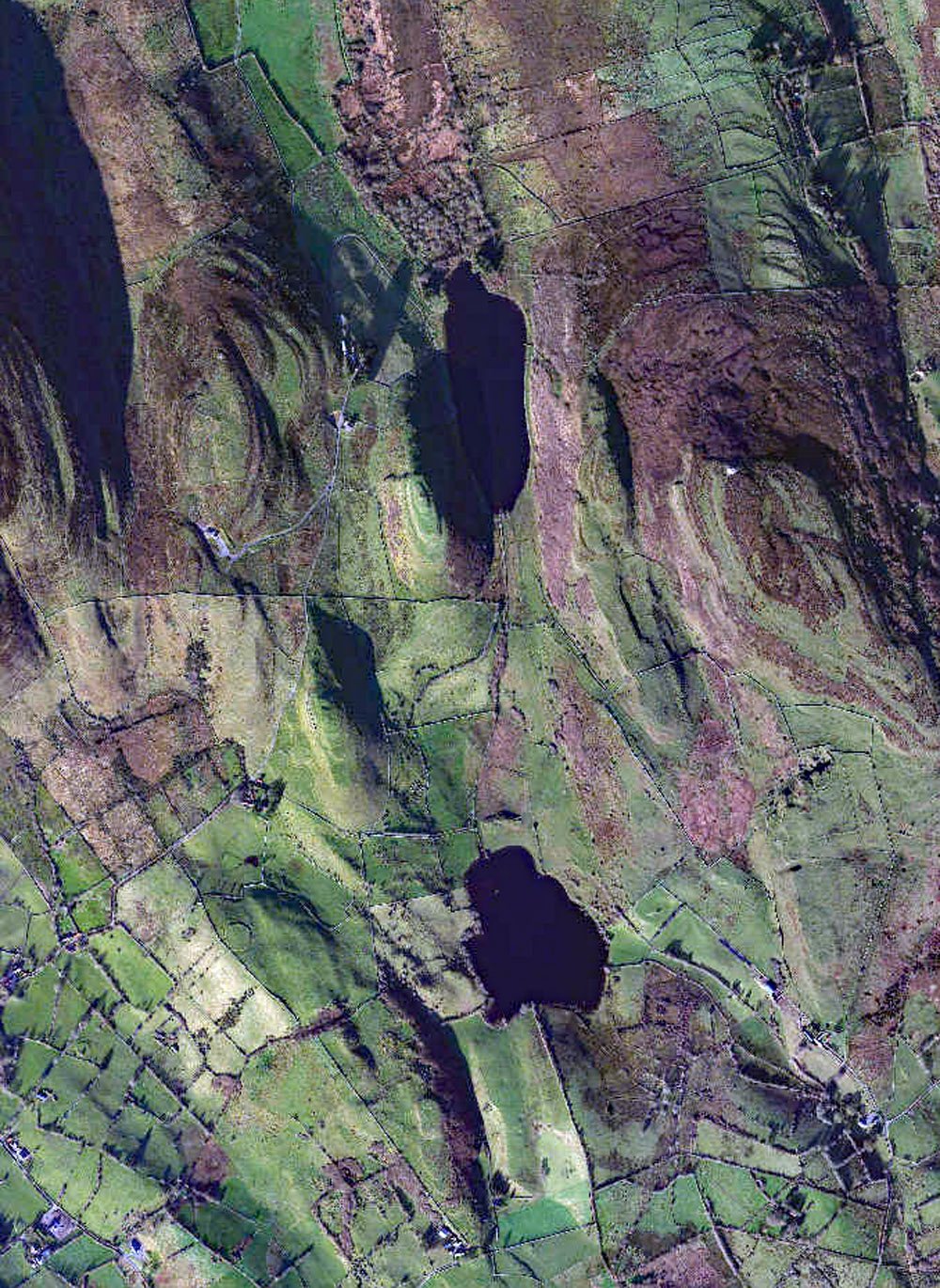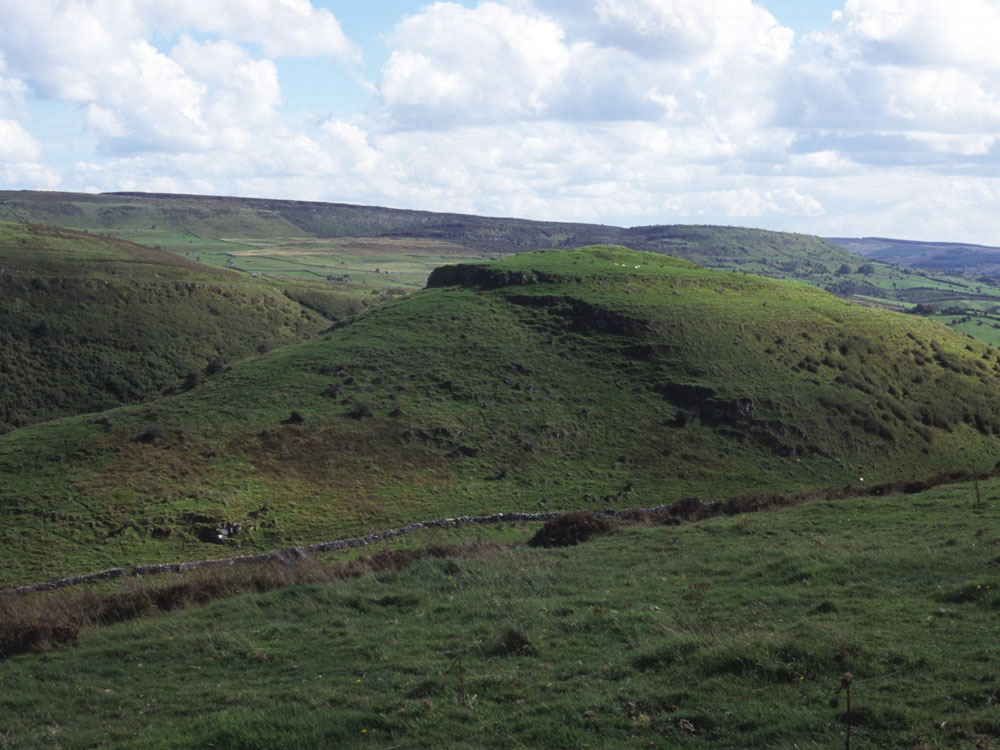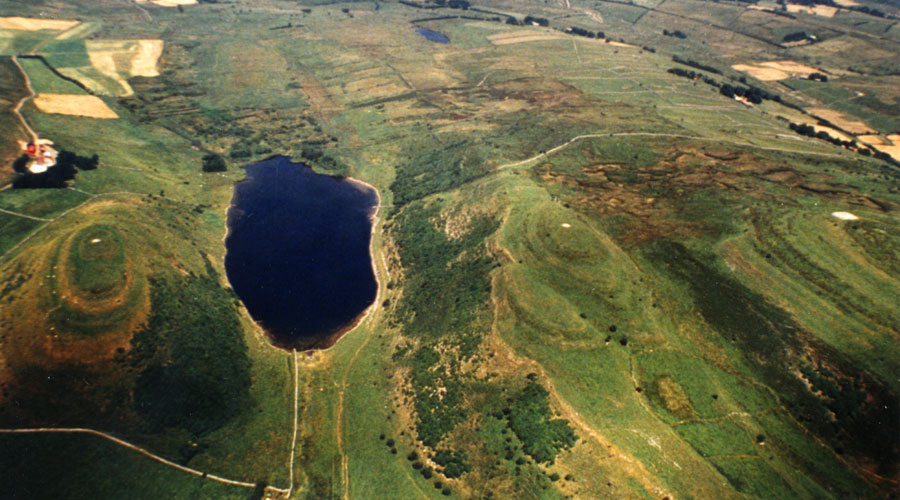Lough na Leibe
Lough na Leibe, the Lake of the Bed is a beautiful spot nestled in the heart of the Bricklieve Mountains. The lake is 144 meters above sea level, and is fed by mountain springs which rise from under the surrounding cairn-decked hills. This area is one of the most mythological parts of County Sligo, and has an abundance of stories set in prehisoric times.
There are ancient roads running by the lake which probably date to medieval times as they run towards the ruins of a thirteenth century towerhouse in Bricklieve townland.
All of the hills in the area are topped by neolithic cairns - Carrowkeel lies just east of the lake, while Kesh Corran looms up on the west side. Immediately west of Lough na Leibe
is Sheecor, possibly
the home of Corran the Harper.

There are two versions of how the lake was named. In one Leibe is a daughter of Manannan Mac Lir, and as so often happens in Celtic stories, the lake is named for the place where she drowned.
Paul Dooley - Irish Wire String Harpist. Cape Breton Strathspey, (0:00), The Wild Irishman (Reel 0:56) & Mari's Wedding (Reel 1:46) Paul Dooley, with a harp he constructed using a design based on the "Brian Ború Harp" or "Trinity College Harp," the oldest surviving Irish Medieval Harp. This is a metal strung harp which is played with the fingenails as opposed to the fingertips .
The other vesion has the lake as one of the beds where Diarmuid and Grainne slept while they were fleeing from Fionn Mac Cumhal. Diarmuid and Grainne eventually settled down just north of the lake in the townland called Grainnemor.

The water from Lough na Leibe flows south for less than a kilometer before entering a turlough (seasonal lake) called Lough Gowra, where it disappears into the earth again.

